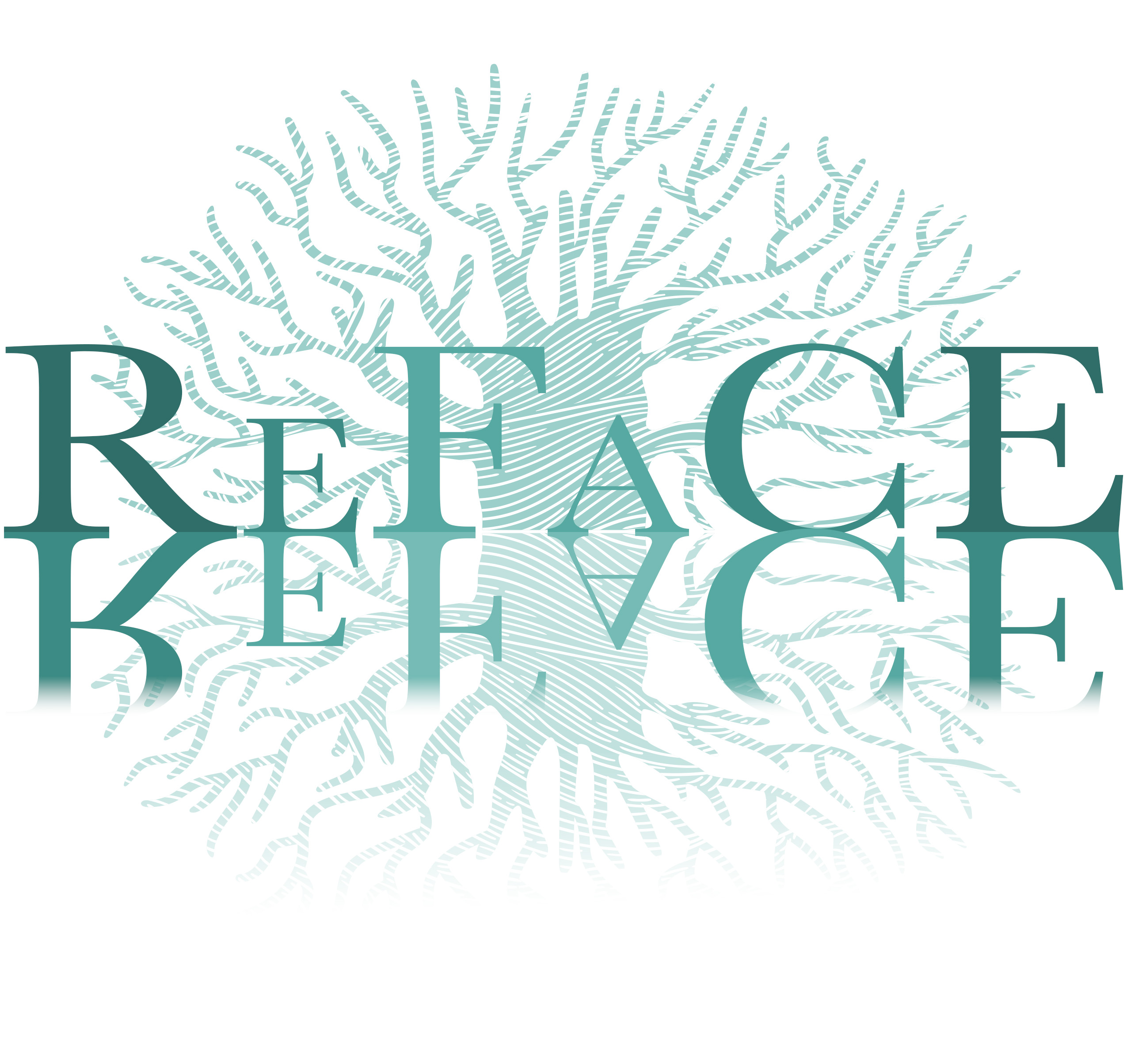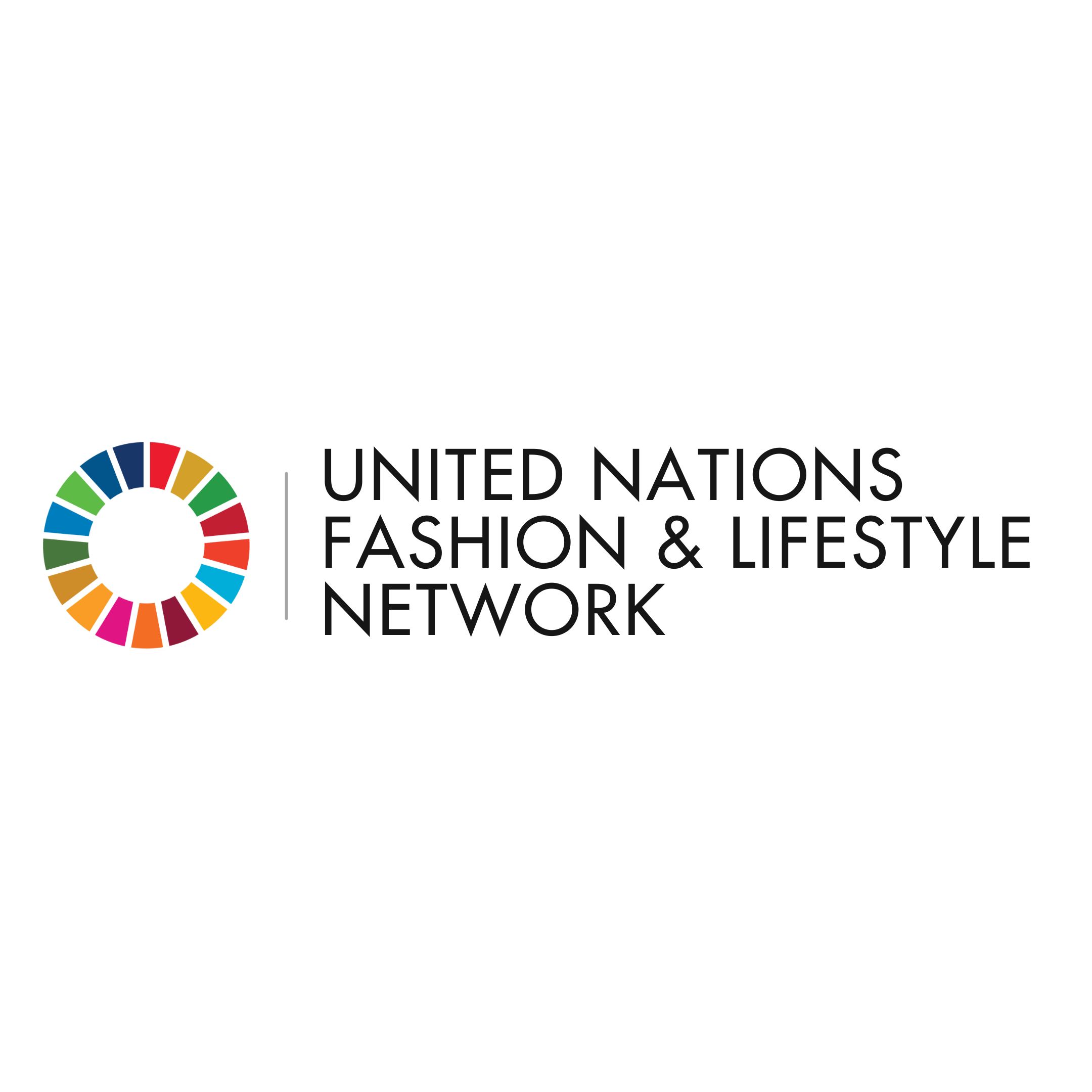The Regenerative Fashion Collective Exchange
Regenerative Fashion Collective Exchange
(
Other relevant actor
)
#SDGAction52677
Description
The Regenerative Fashion Collective Exchange (ReFaCE) was created to holistically address the negative impact of the global fashion industry on the environment, biodiversity, and climate change, that disproportionally affects the African continent (Africa contributes less than 4% of global greenhouse gas emissions and is instead the largest contributor to carbon absorption thanks to the Congo basin). ReFaCE's mission is to provide a platform that develops a regeneratively sustainable fashion ecosystem in Africa that promotes circular economy principles such as reduce, reuse, recycle, and indigenous regenerative practices such as soil regeneration, carbon sequestration, and biodiversity conservation, to achieve climate commitments, ecosystem resilience, and to close the C3 loop for the good of the fashion industry and the health of the planet. Our objectives to fulfill our mission are to: 1. Raise awareness of the environmental impact of the global fashion industry on our region and how it contributes to climate change. 2. Develop and support the establishment of a local women and youth-led regenerative textile industry, with an emphasis on training in regenerative agricultural practices, fair working conditions and supply chain transparency for local and global markets. 3. Create a platform for fashion industry stakeholders in Africa to share knowledge and collaborate on cutting-edge regenerative solutions, and to foster a community of women and youth Regenerative Fashion Practitioners. 4. Ensure job and food security by developing and supporting the production and sourcing of regenerative fibre crops while combating poverty, ensuring human health, and biodiversity conservation. 5. Establish an African Certification Standard for regenerative products to not only restore the agency of indigenous people over their land and its produce, but to also restitute their cultural heritage.
1. Organizing workshops, seminars, and innovation challenges on Regenerative Fashion to raise awareness, share knowledge, and encourage the use of sustainable and regenerative materials, such as organic cotton, Eri silk, hemp, linen, kapok, baobab, and other indigenous regenerative fibers. 2. Creating partnerships with fashion industry stakeholders to develop a research and development innovation lab for textile fibres and establish local textile and garment manufacturing industries to promote the use of sustainable materials and practices. 3. Promoting local sourcing of raw materials through capacity building, training programs, and facilitating networking and collaboration opportunities for women and youth between local and global regenerative fashion industry stakeholders and practitioners. 4. Developing sustainable and regenerative sourcing guidelines and certifications to promote environmentally responsible practices.
ReFaCE is governed by an Advisory Council of industry leaders and various partnerships. In partnership with the GreenWorld Campaign, ReFaCE mandate is to provide the MRVs to guide the regenerative agricultural practices for the fibre crops to ensure global standards are met and to help establish the first African global certification standard for regenerative products.
1. Creation of a regenerative textile industry that promotes biodynamic practices in the fashion industry. 2. Increased job and food security, and biodiversity conservation for local communities. 3. Promotion of regenerative practices of women and youth in the region. 4. Establishment of an African-based certification standard for regenerative textiles. 5. Restitution of Cultural Heritage
Jumuiya ya Kaunti za Pwani (JKP), Swahili Coast Culture, Swahili Development Initiative, Greenworld Campaign, Creative DNA, Fashion Revolution, Moi University, Pwani University, Gearbox
SDGS & Targets
Goal 8
Promote sustained, inclusive and sustainable economic growth, full and productive employment and decent work for all
8.1
8.1.1
Annual growth rate of real GDP per capita
8.2
Achieve higher levels of economic productivity through diversification, technological upgrading and innovation, including through a focus on high-value added and labour-intensive sectors
8.2.1
Annual growth rate of real GDP per employed person
8.3
Promote development-oriented policies that support productive activities, decent job creation, entrepreneurship, creativity and innovation, and encourage the formalization and growth of micro-, small- and medium-sized enterprises, including through access to financial services
8.3.1
Proportion of informal employment in total employment, by sector and sex
8.4
Improve progressively, through 2030, global resource efficiency in consumption and production and endeavour to decouple economic growth from environmental degradation, in accordance with the 10-Year Framework of Programmes on Sustainable Consumption and Production, with developed countries taking the lead
8.4.1
Material footprint, material footprint per capita, and material footprint per GDP
8.4.2
Domestic material consumption, domestic material consumption per capita, and domestic material consumption per GDP
8.5
8.5.1
Average hourly earnings of female and male employees, by occupation, age and persons with disabilities
8.5.2
Unemployment rate, by sex, age and persons with disabilities
8.6
8.6.1
Proportion of youth (aged 15-24 years) not in education, employment or training
8.7
Take immediate and effective measures to eradicate forced labour, end modern slavery and human trafficking and secure the prohibition and elimination of the worst forms of child labour, including recruitment and use of child soldiers, and by 2025 end child labour in all its forms
8.7.1
Proportion and number of children aged 5‑17 years engaged in child labour, by sex and age
8.8
Protect labour rights and promote safe and secure working environments for all workers, including migrant workers, in particular women migrants, and those in precarious employment
8.8.1
Fatal and non-fatal occupational injuries per 100,000 workers, by sex and migrant status
8.8.2
Level of national compliance with labour rights (freedom of association and collective bargaining) based on International Labour Organization (ILO) textual sources and national legislation, by sex and migrant status
8.9
By 2030, devise and implement policies to promote sustainable tourism that creates jobs and promotes local culture and products
8.9.1
Tourism direct GDP as a proportion of total GDP and in growth rate
8.10
Strengthen the capacity of domestic financial institutions to encourage and expand access to banking, insurance and financial services for all
8.10.1
(a) Number of commercial bank branches per 100,000 adults and (b) number of automated teller machines (ATMs) per 100,000 adults
8.10.2
Proportion of adults (15 years and older) with an account at a bank or other financial institution or with a mobile-money-service provider
8.a
8.a.1
Aid for Trade commitments and disbursements
8.b
By 2020, develop and operationalize a global strategy for youth employment and implement the Global Jobs Pact of the International Labour Organization
8.b.1
Existence of a developed and operationalized national strategy for youth employment, as a distinct strategy or as part of a national employment strategy
Goal 9
Build resilient infrastructure, promote inclusive and sustainable industrialization and foster innovation
9.1
9.1.1
Proportion of the rural population who live within 2 km of an all-season road
9.1.2
Passenger and freight volumes, by mode of transport
9.2
Promote inclusive and sustainable industrialization and, by 2030, significantly raise industry’s share of employment and gross domestic product, in line with national circumstances, and double its share in least developed countries
9.2.1
Manufacturing value added as a proportion of GDP and per capita
9.2.2
Manufacturing employment as a proportion of total employment
9.3
9.3.1
Proportion of small-scale industries in total industry value added
9.3.2
Proportion of small-scale industries with a loan or line of credit
9.4
By 2030, upgrade infrastructure and retrofit industries to make them sustainable, with increased resource-use efficiency and greater adoption of clean and environmentally sound technologies and industrial processes, with all countries taking action in accordance with their respective capabilities
9.4.1
CO2 emission per unit of value added
9.5
9.5.1
Research and development expenditure as a proportion of GDP
9.5.2
Researchers (in full-time equivalent) per million inhabitants
9.a
9.a.1
Total official international support (official development assistance plus other official flows) to infrastructure
9.b
9.b.1
Proportion of medium and high-tech industry value added in total value added
9.c
Significantly increase access to information and communications technology and strive to provide universal and affordable access to the Internet in least developed countries by 2020
9.c.1
Proportion of population covered by a mobile network, by technology
Goal 11
Make cities and human settlements inclusive, safe, resilient and sustainable
11.1
By 2030, ensure access for all to adequate, safe and affordable housing and basic services and upgrade slums
11.1.1
Proportion of urban population living in slums, informal settlements or inadequate housing
11.2
11.2.1
Proportion of population that has convenient access to public transport, by sex, age and persons with disabilities
11.3
11.3.1
Ratio of land consumption rate to population growth rate
11.3.2
Proportion of cities with a direct participation structure of civil society in urban planning and management that operate regularly and democratically
11.4
Strengthen efforts to protect and safeguard the world’s cultural and natural heritage
11.4.1
Total per capita expenditure on the preservation, protection and conservation of all cultural and natural heritage, by source of funding (public, private), type of heritage (cultural, natural) and level of government (national, regional, and local/municipal)
11.5
By 2030, significantly reduce the number of deaths and the number of people affected and substantially decrease the direct economic losses relative to global gross domestic product caused by disasters, including water-related disasters, with a focus on protecting the poor and people in vulnerable situations
11.5.1
Number of deaths, missing persons and directly affected persons attributed to disasters per 100,000 population
11.5.2
Direct economic loss attributed to disasters in relation to global domestic product (GDP)
11.5.3
(a) Damage to critical infrastructure and (b) number of disruptions to basic services, attributed to disasters
11.6
By 2030, reduce the adverse per capita environmental impact of cities, including by paying special attention to air quality and municipal and other waste management
11.6.1
Proportion of municipal solid waste collected and managed in controlled facilities out of total municipal waste generated, by cities
11.6.2
Annual mean levels of fine particulate matter (e.g. PM2.5 and PM10) in cities (population weighted)
11.7
11.7.1
Average share of the built-up area of cities that is open space for public use for all, by sex, age and persons with disabilities
11.7.2
Proportion of persons victim of non-sexual or sexual harassment, by sex, age, disability status and place of occurrence, in the previous 12 months
11.a
Support positive economic, social and environmental links between urban, peri-urban and rural areas by strengthening national and regional development planning
11.a.1
Number of countries that have national urban policies or regional development plans that (a) respond to population dynamics; (b) ensure balanced territorial development; and (c) increase local fiscal space
11.b
By 2020, substantially increase the number of cities and human settlements adopting and implementing integrated policies and plans towards inclusion, resource efficiency, mitigation and adaptation to climate change, resilience to disasters, and develop and implement, in line with the Sendai Framework for Disaster Risk Reduction 2015-2030, holistic disaster risk management at all levels
11.b.1
Number of countries that adopt and implement national disaster risk reduction strategies in line with the Sendai Framework for Disaster Risk Reduction 2015–2030
11.b.2
Proportion of local governments that adopt and implement local disaster risk reduction strategies in line with national disaster risk reduction strategies
11.c
Support least developed countries, including through financial and technical assistance, in building sustainable and resilient buildings utilizing local materials
Goal 12
Ensure sustainable consumption and production patterns
12.1
Implement the 10-Year Framework of Programmes on Sustainable Consumption and Production Patterns, all countries taking action, with developed countries taking the lead, taking into account the development and capabilities of developing countries
12.1.1
Number of countries developing, adopting or implementing policy instruments aimed at supporting the shift to sustainable consumption and production
12.2
By 2030, achieve the sustainable management and efficient use of natural resources
12.2.1
Material footprint, material footprint per capita, and material footprint per GDP
12.2.2
Domestic material consumption, domestic material consumption per capita, and domestic material consumption per GDP
12.3
By 2030, halve per capita global food waste at the retail and consumer levels and reduce food losses along production and supply chains, including post-harvest losses
12.3.1
(a) Food loss index and (b) food waste index
12.4
By 2020, achieve the environmentally sound management of chemicals and all wastes throughout their life cycle, in accordance with agreed international frameworks, and significantly reduce their release to air, water and soil in order to minimize their adverse impacts on human health and the environment
12.4.1
12.4.2
(a) Hazardous waste generated per capita; and (b) proportion of hazardous waste treated, by type of treatment
12.5
By 2030, substantially reduce waste generation through prevention, reduction, recycling and reuse
12.5.1
National recycling rate, tons of material recycled
12.6
Encourage companies, especially large and transnational companies, to adopt sustainable practices and to integrate sustainability information into their reporting cycle
12.6.1
12.7
Promote public procurement practices that are sustainable, in accordance with national policies and priorities
12.7.1
Number of countries implementing sustainable public procurement policies and action plans
12.8
By 2030, ensure that people everywhere have the relevant information and awareness for sustainable development and lifestyles in harmony with nature
12.8.1
Extent to which (i) global citizenship education and (ii) education for sustainable development are mainstreamed in (a) national education policies; (b) curricula; (c) teacher education; and (d) student assessment
12.a
Support developing countries to strengthen their scientific and technological capacity to move towards more sustainable patterns of consumption and production
12.a.1
Installed renewable energy-generating capacity in developing and developed countries (in watts per capita)
12.b
Develop and implement tools to monitor sustainable development impacts for sustainable tourism that creates jobs and promotes local culture and products
12.b.1
Implementation of standard accounting tools to monitor the economic and environmental aspects of tourism sustainability
12.c
Rationalize inefficient fossil-fuel subsidies that encourage wasteful consumption by removing market distortions, in accordance with national circumstances, including by restructuring taxation and phasing out those harmful subsidies, where they exist, to reflect their environmental impacts, taking fully into account the specific needs and conditions of developing countries and minimizing the possible adverse impacts on their development in a manner that protects the poor and the affected communities
12.c.1
Amount of fossil-fuel subsidies (production and consumption) per unit of GDP
Goal 13
Take urgent action to combat climate change and its impacts
13.1
Strengthen resilience and adaptive capacity to climate-related hazards and natural disasters in all countries
13.1.1
Number of deaths, missing persons and directly affected persons attributed to disasters per 100,000 population
13.1.2
Number of countries that adopt and implement national disaster risk reduction strategies in line with the Sendai Framework for Disaster Risk Reduction 2015–2030
13.1.3
Proportion of local governments that adopt and implement local disaster risk reduction strategies in line with national disaster risk reduction strategies
13.2
Integrate climate change measures into national policies, strategies and planning
13.2.1
Number of countries with nationally determined contributions, long-term strategies, national adaptation plans and adaptation communications, as reported to the secretariat of the United Nations Framework Convention on Climate Change
13.2.2
Total greenhouse gas emissions per year
13.3
Improve education, awareness-raising and human and institutional capacity on climate change mitigation, adaptation, impact reduction and early warning
13.3.1
Extent to which (i) global citizenship education and (ii) education for sustainable development are mainstreamed in (a) national education policies; (b) curricula; (c) teacher education; and (d) student assessment
13.a
Implement the commitment undertaken by developed-country parties to the United Nations Framework Convention on Climate Change to a goal of mobilizing jointly $100 billion annually by 2020 from all sources to address the needs of developing countries in the context of meaningful mitigation actions and transparency on implementation and fully operationalize the Green Climate Fund through its capitalization as soon as possible
13.a.1
Amounts provided and mobilized in United States dollars per year in relation to the continued existing collective mobilization goal of the $100 billion commitment through to 2025
13.b
Promote mechanisms for raising capacity for effective climate change-related planning and management in least developed countries and small island developing States, including focusing on women, youth and local and marginalized communities
13.b.1
Number of least developed countries and small island developing States with nationally determined contributions, long-term strategies, national adaptation plans and adaptation communications, as reported to the secretariat of the United Nations Framework Convention on Climate Change
Goal 15
Protect, restore and promote sustainable use of terrestrial ecosystems, sustainably manage forests, combat desertification, and halt and reverse land degradation and halt biodiversity loss
15.1
By 2020, ensure the conservation, restoration and sustainable use of terrestrial and inland freshwater ecosystems and their services, in particular forests, wetlands, mountains and drylands, in line with obligations under international agreements
15.1.1
15.1.2
15.2
By 2020, promote the implementation of sustainable management of all types of forests, halt deforestation, restore degraded forests and substantially increase afforestation and reforestation globally
15.2.1
15.3
By 2030, combat desertification, restore degraded land and soil, including land affected by desertification, drought and floods, and strive to achieve a land degradation-neutral world
15.3.1
15.4
By 2030, ensure the conservation of mountain ecosystems, including their biodiversity, in order to enhance their capacity to provide benefits that are essential for sustainable development
15.4.1
15.4.2
15.5
Take urgent and significant action to reduce the degradation of natural habitats, halt the loss of biodiversity and, by 2020, protect and prevent the extinction of threatened species
15.5.1
15.6
Promote fair and equitable sharing of the benefits arising from the utilization of genetic resources and promote appropriate access to such resources, as internationally agreed
15.6.1
15.7
Take urgent action to end poaching and trafficking of protected species of flora and fauna and address both demand and supply of illegal wildlife products
15.7.1
15.8
By 2020, introduce measures to prevent the introduction and significantly reduce the impact of invasive alien species on land and water ecosystems and control or eradicate the priority species
15.8.1
15.9
By 2020, integrate ecosystem and biodiversity values into national and local planning, development processes, poverty reduction strategies and accounts
15.9.1
(a) Number of countries that have established national targets in accordance with or similar to Aichi Biodiversity Target 2 of the Strategic Plan for Biodiversity 2011–2020 in their national biodiversity strategy and action plans and the progress reported towards these targets; and (b) integration of biodiversity into national accounting and reporting systems, defined as implementation of the System of Environmental-Economic Accounting
15.a
Mobilize and significantly increase financial resources from all sources to conserve and sustainably use biodiversity and ecosystems
15.a.1
(a) Official development assistance on conservation and sustainable use of biodiversity; and (b) revenue generated and finance mobilized from biodiversity-relevant economic instruments
15.b
Mobilize significant resources from all sources and at all levels to finance sustainable forest management and provide adequate incentives to developing countries to advance such management, including for conservation and reforestation
15.b.1
(a) Official development assistance on conservation and sustainable use of biodiversity; and (b) revenue generated and finance mobilized from biodiversity-relevant economic instruments
15.c
Enhance global support for efforts to combat poaching and trafficking of protected species, including by increasing the capacity of local communities to pursue sustainable livelihood opportunities
15.c.1
SDG 14 targets covered
| Name | Description |
|---|
Deliverables & Timeline
Secure value chain partnership agreements
Development of MRVs
Inauguration of the research and development innovation lab
Engage 1000 small-holder farmers to grow regenerative fibre crops
Resources mobilized
Partnership Progress

Feedback
Action Network

Timeline
Entity
Region
- Africa
Geographical coverage
Other beneficiaries
Small-holder farmers, Women, Youth, students
More information
Countries


















Contact Information
Lisa Kibutu, Founder

